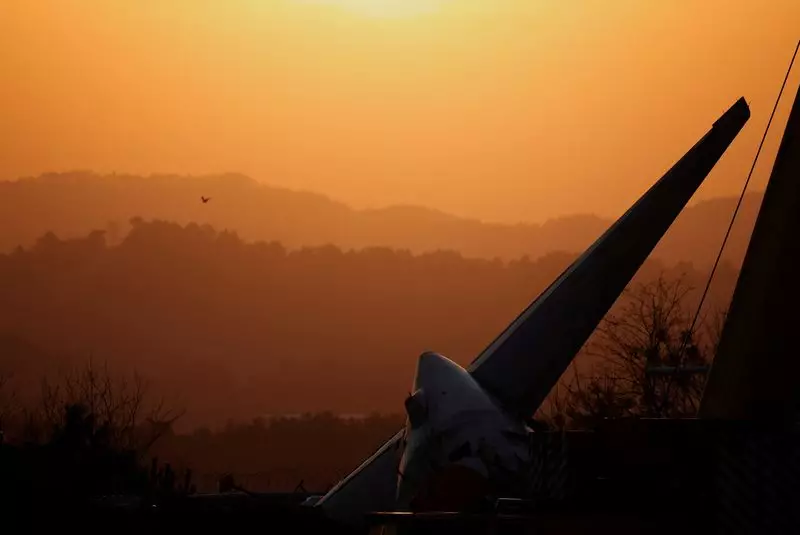The recent aviation disaster involving a Boeing 737-800 in South Korea has triggered a significant response from the nation’s transport authorities. This incident, which resulted in the loss of 179 lives, marked one of the most tragic events in the country’s aviation history. In the wake of this catastrophe, the South Korean transport ministry has taken decisive action by extending the timeline for special inspections of all Boeing 737-800 aircraft operated by local airlines.
The ill-fated Jeju Air flight originated from Bangkok and was scheduled to land at Muan County Airport in southwestern South Korea. Preliminary reports indicate that the aircraft experienced a belly landing and failed to stop, ultimately colliding with an embankment before erupting in flames. This alarming sequence of events raised urgent concerns about the operational safety of the Boeing 737-800, prompting investigations into the aircraft’s maintenance status and the circumstances leading to the crash.
Initially set to conclude shortly after the tragedy, the inspections of all 101 Boeing 737-800 jets in the country have been prolonged by an additional week, now scheduled for completion on January 10. Through these inspections, vital areas of scrutiny include the engines, landing gear, and overall maintenance records of the aircraft. Such measures signal a commitment not only to safety but also to ensuring that airline operations adhere strictly to regulatory standards. Any airline found in severe violation of safety protocols could face operational suspensions, reinforcing the seriousness of this situation.
Collaboration with U.S. Authorities
In the context of investigations, South Korea’s aviation safety team has announced plans to collaborate with the U.S. National Transportation Safety Board (NTSB). A group of investigators is slated to travel to the United States to analyze critical flight data from the wreckage, including the flight data recorder and cockpit voice recorder. The investigation also extends to examining the remains of the aircraft itself while probing relevant communications, particularly focusing on a reported bird strike that may have prompted the aircraft’s emergency landing.
As inquiries continue, South Korean acting President Choi Sang-mok has emphasized the urgency of collecting and analyzing evidence to determine the cause of the tragedy. This includes examining the series of events leading to the emergency declaration made by the pilot. Investigators are also looking into the crucial question of why the aircraft’s landing gear failed to deploy, alongside the decision-making process of the cockpit crew in the moments prior to the crash.
Additionally, authorities are scrutinizing both Jeju Air and Muan International Airport operators as part of the broader investigation, which has led to restrictions on key officials from leaving the country. These measures demonstrate the government’s commitment to accountability and transparency in the aftermath of this disaster.
This unfortunate event serves as a grim reminder of the vulnerabilities inherent in aviation safety. The ongoing investigations and inspections indicate a robust response aimed at retrieving critical information and improving future safety measures. As South Korea grapples with the aftermath of this catastrophe, it remains to be seen how the findings will shape aviation policies and restore public confidence in the nation’s air travel systems.

